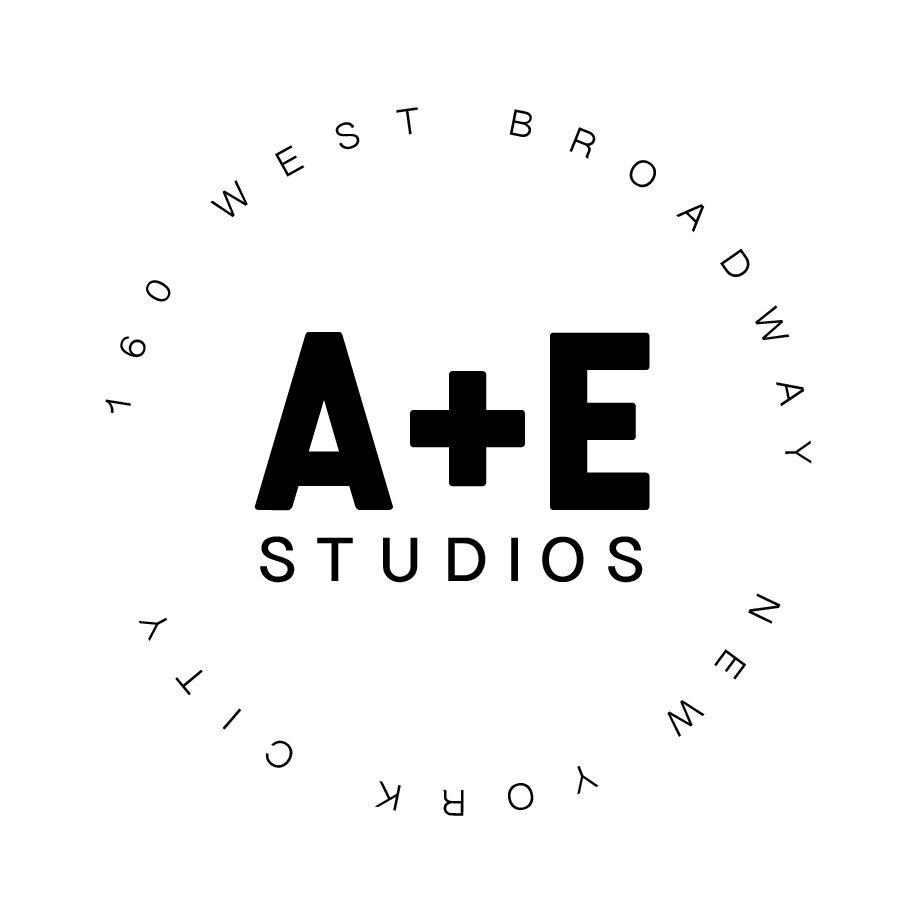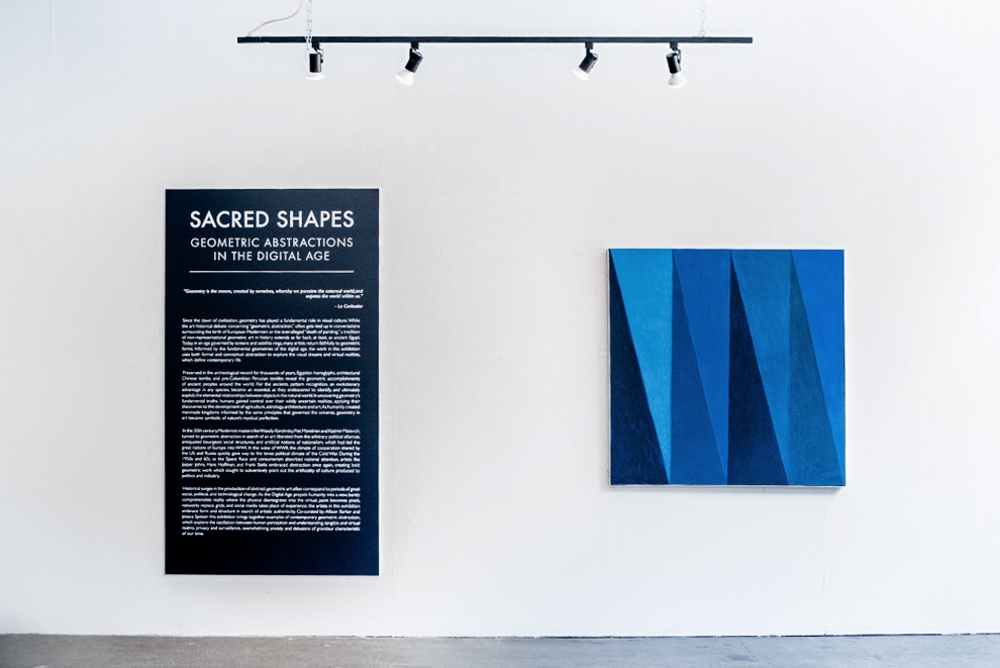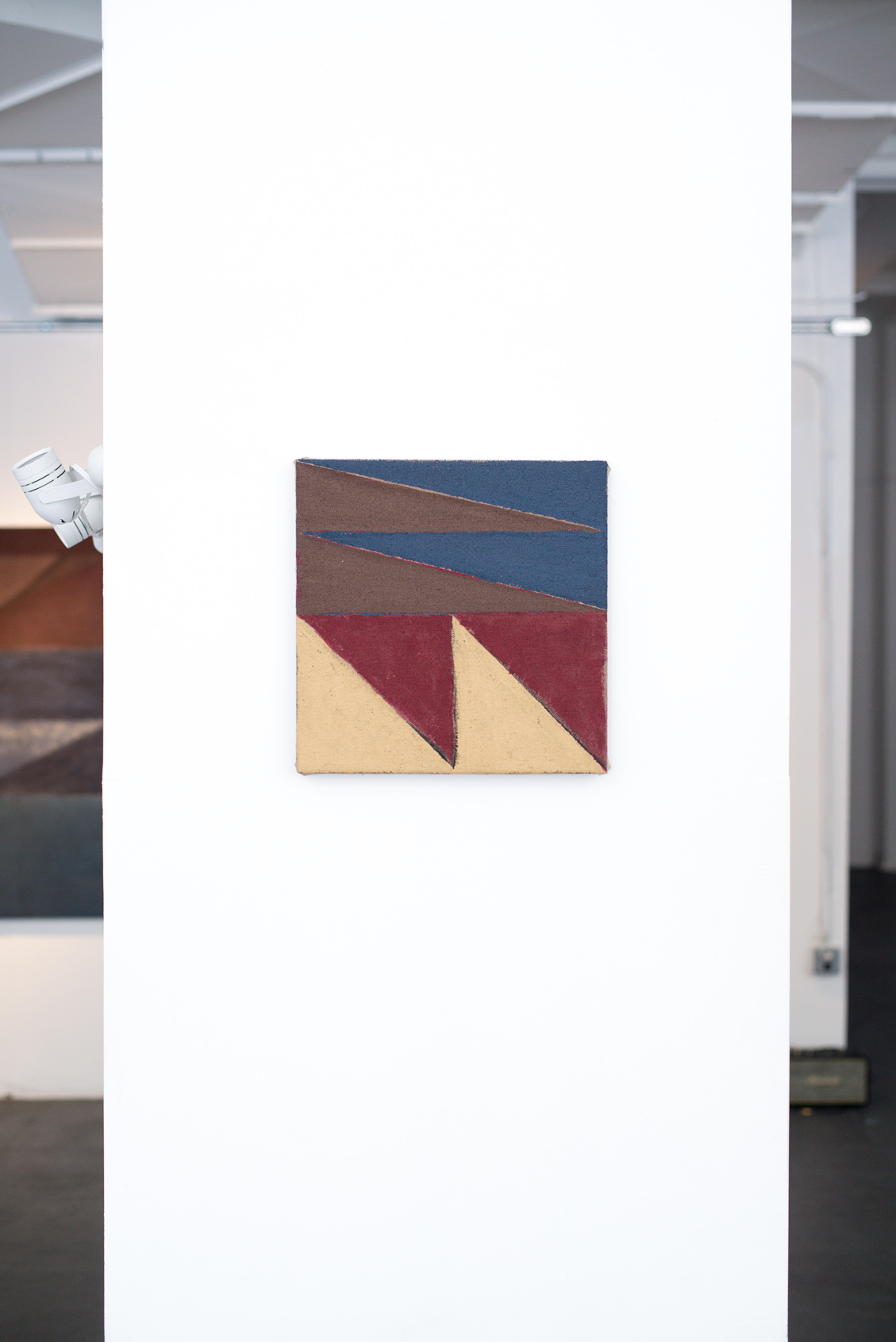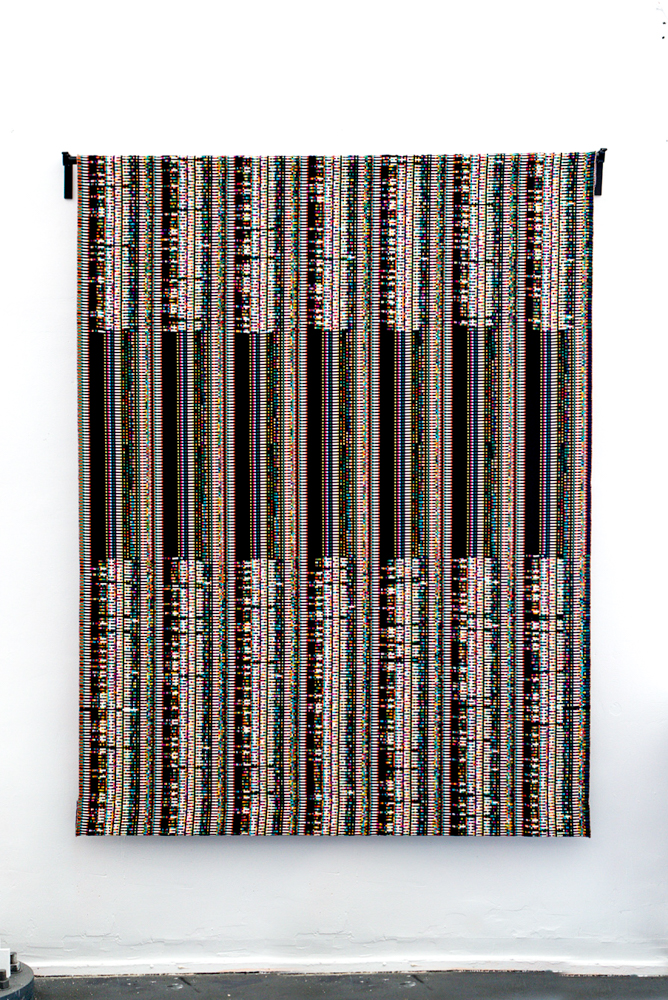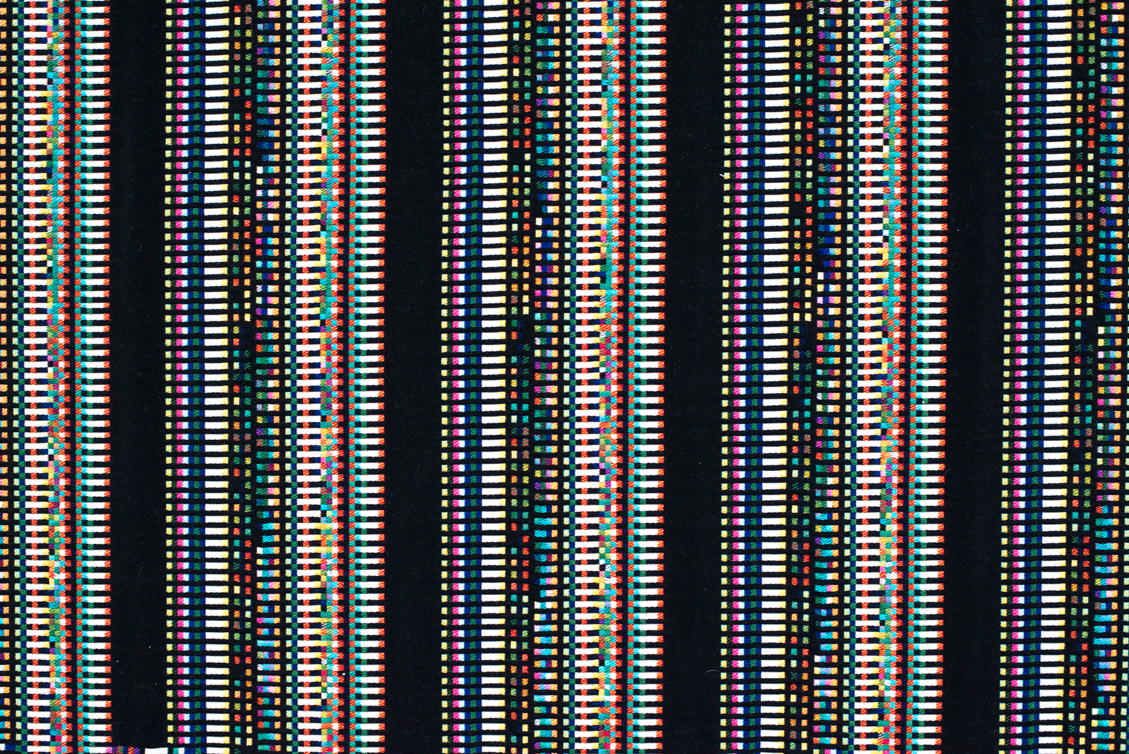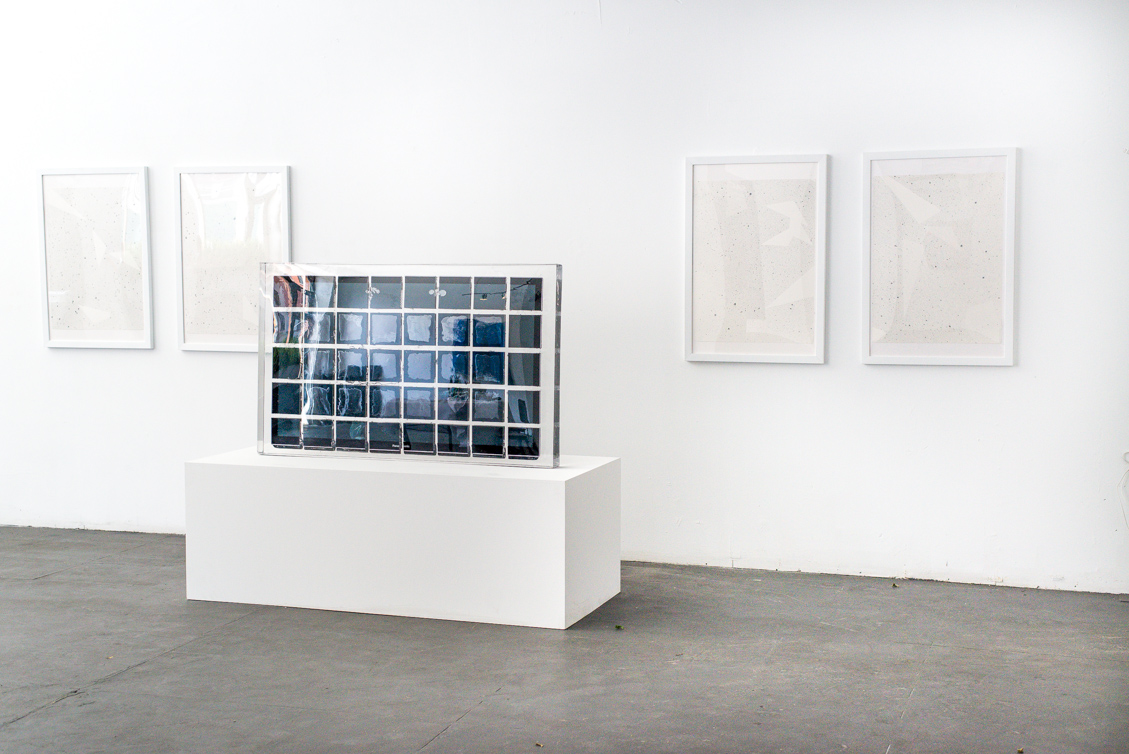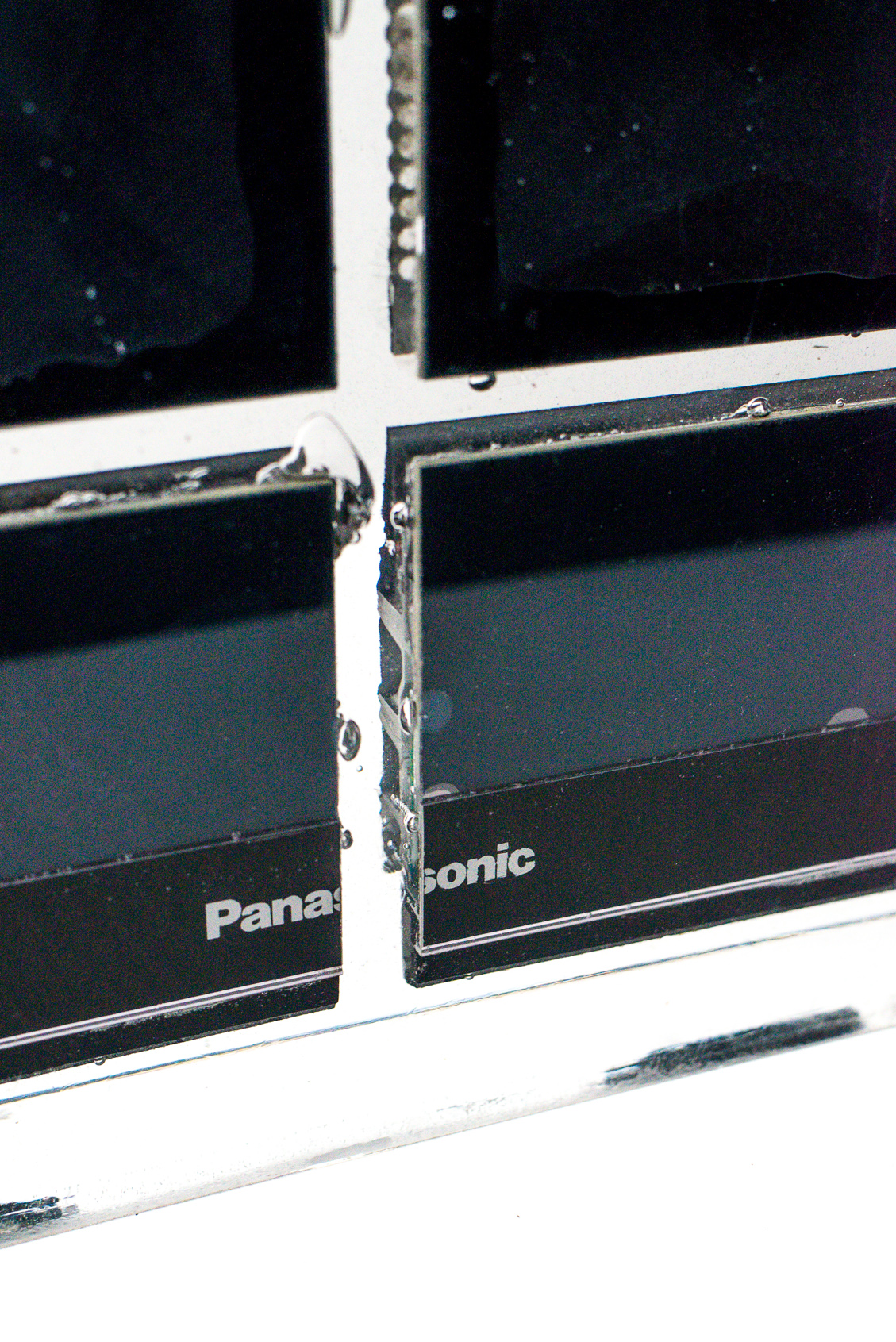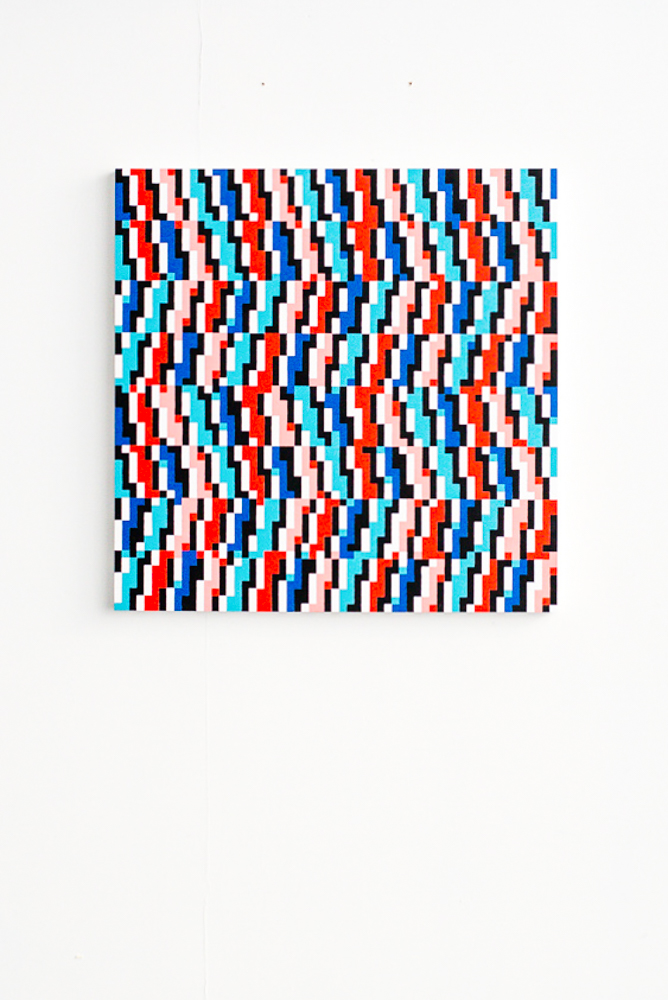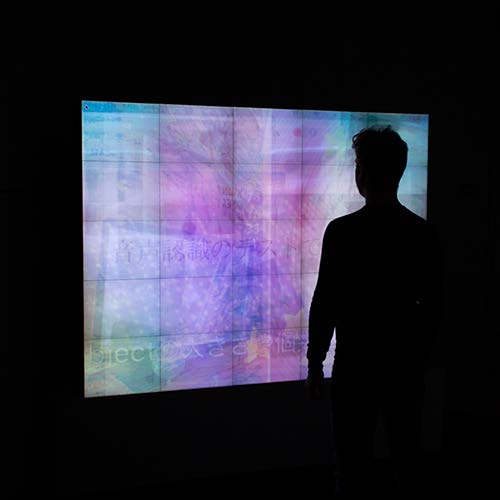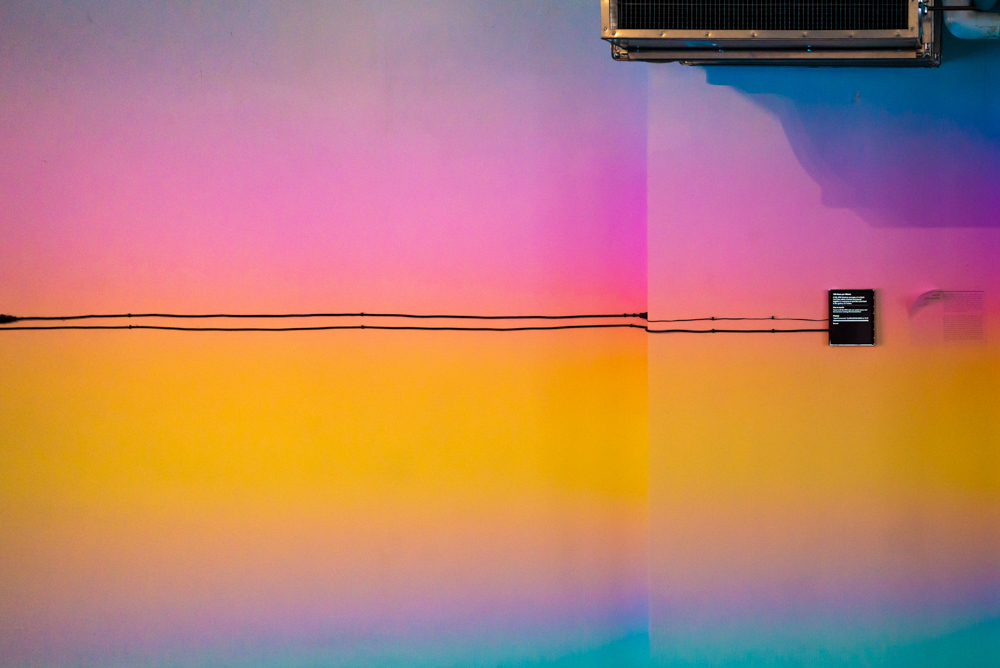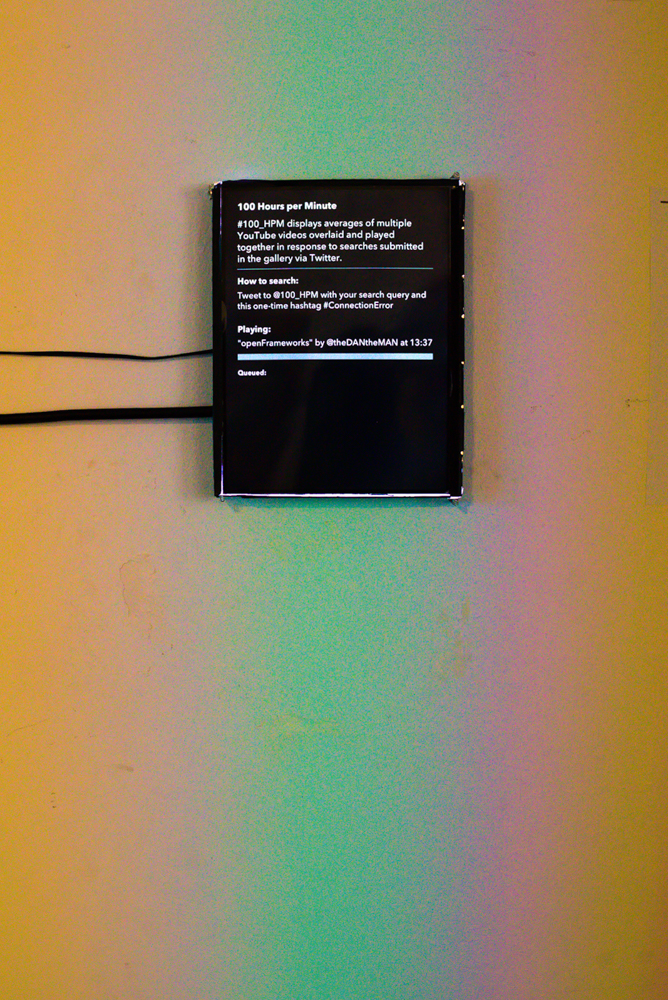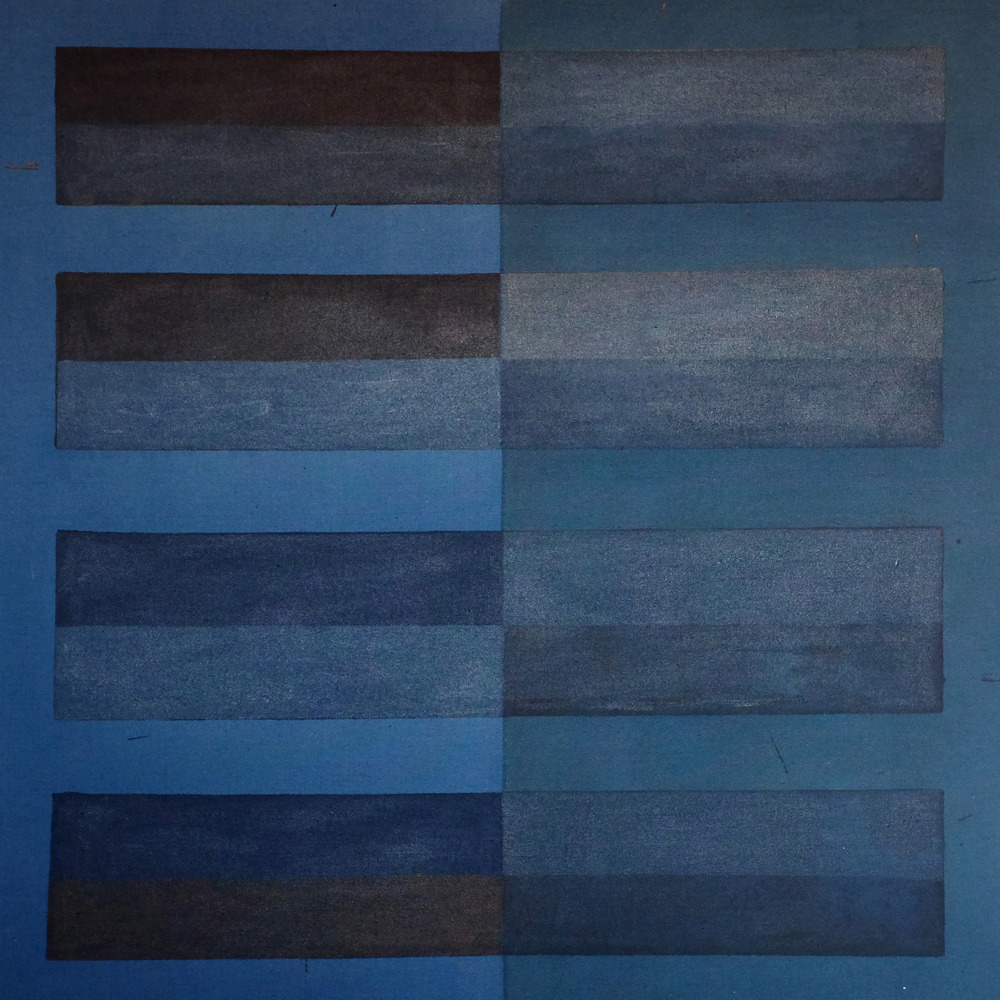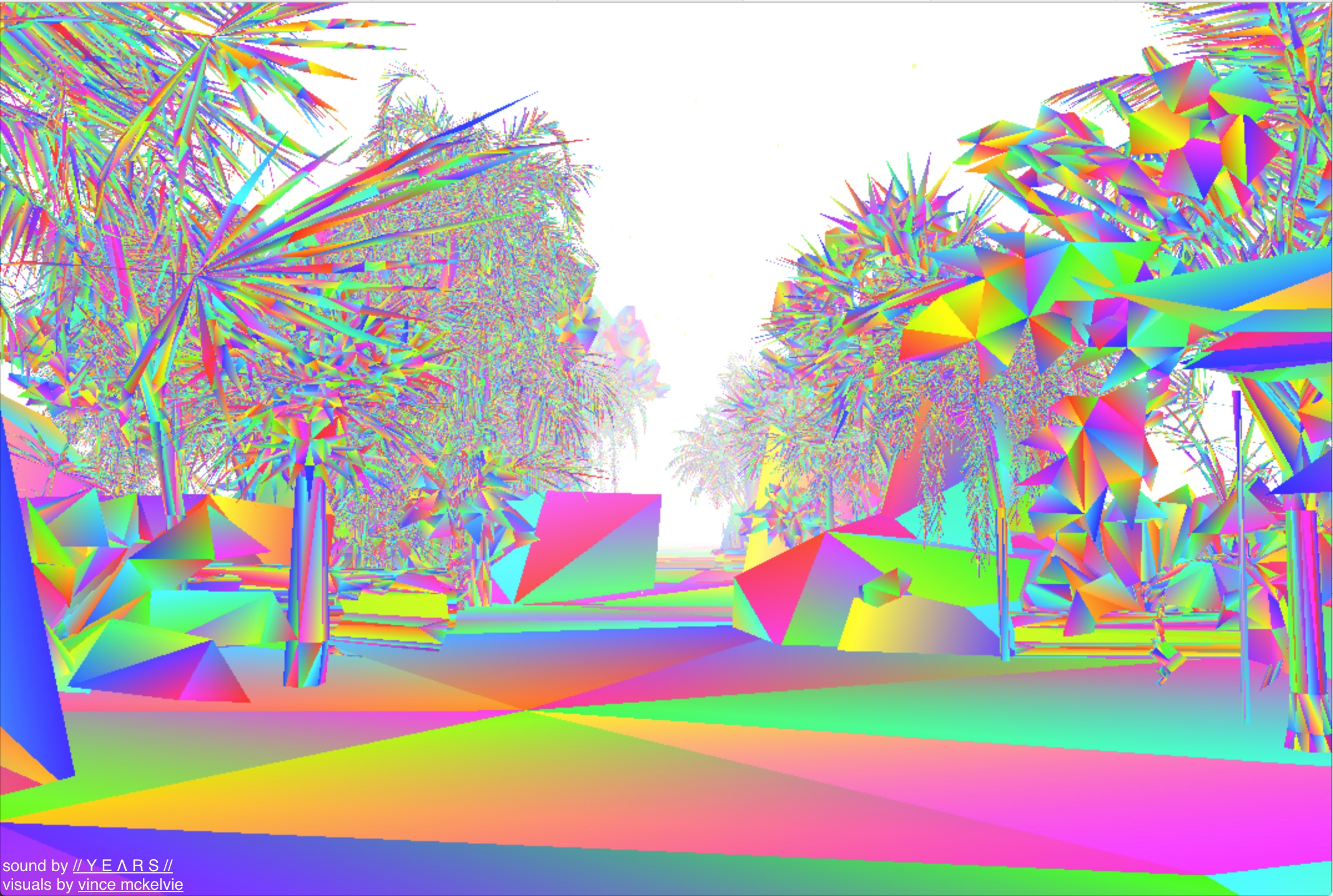ON VIEW MAY 16 - June 6, 2015
Sacred shapes:
geometric abstractioNS in the digital age
ROBERT OTTO EPSTEIN, SAM FRYER, VINCE MCKELVIE, PHILLIP DAVID STEARNS, JAMIE ZIGELBAUM
NEW YORK, NY, May 15, 2015—A+E Studios is pleased to present, Sacred Shapes: Geometric Abstractions in the Digital Age, on through May 31, 2015.
Documented in a visual record extending as far back as ancient Egypt, times of extreme uncertainty have produced great waves of geometric art in visual culture. While the art historical debate concerning “geometric abstraction,” often gets tied up in conversations surrounding the birth of European Modernism, or the ever-alleged death of painting - today, as the Digital Age collapses our sense of time and space, the term feels as relevant as ever. In a world regulated by rectilinear screens and orbital satellites, the artists in this exhibition return faithfully to geometric forms as they grapple with the abstract realities of contemporary life. Co-curated by Allison Barker and Jessica Speiser, Sacred Shapes gathers together the works of Robert Otto Epstein, Sam Fryer, Vince McKelvie, Phillip David Stearns and Jamie Zigelbaum in an exhibition that includes drawing, painting, sculpture, interactive installation and digital projection.
Through careful observation, ancient civilizations around the world independently uncovered the elemental relationships that govern the universe. As they began to apply geometry’s fundamental truths to the development of agriculture, astrology, architecture and art, the ancients gained control over the wildly uncertain realities of life on earth. Egyptian hieroglyphs, architectural Chinese tombs, and pre-Columbian Peruvian textiles, all provide evidence of an empirical human reverence for geometry, and in particular its ability to help us understand, chart, and predict the world around us.
At the turn of the 20th century, Modernists like Wassily Kandinsky, Piet Mondrian and Kazimir Malevich, shocked the European art establishment when they rejected representational painting in favor of a purely geometric art. For these artists, abstract forms provided a language liberated from the the world of representation, which had led Europe into WWI. In the wake of WWII, the polarizing political climate of the Cold War fed an atmosphere of national anxiety in America. Throughout the 50s and 60s, artists like Jasper Johns, Hans Hoffman, and Frank Stella, created potently subversive geometric images as they attempted to expose the coded symbolic language used to artificially promote capitalist culture.
Today, as the Digital Age propels humanity into a new, barely comprehensible realm, artists turn to geometric abstraction once again in search of the same structure, certainty, and authenticity it provided its previous practitioners. As the physical disintegrates into the virtual, mercurial networks replace predictable grids, and social media takes the place of experience, the artists in Sacred Shapes illuminate a variety of radically abstract concepts transforming contemporary life into augmented reality while collectively suggesting we are again immersed in an era of deep and unifying anxiety.
About the artists:
SAM FRYER
Sam Fryer, Blue Sectional
Sam Fryer, Zig Zag
A lifelong student of Analytic Philosophy and Aesthetics, Sam Fryer takes inspiration from the styles, structures and concepts developed in abstract art since the advent of Modernism at the turn of the 20th century. Like the Modernists, Fryer uses geometry to explore his interest in perceptual ambiguity - how images affect our way of seeing and understanding them. His paintings and drawings reflect a careful consideration of color, scale and texture, producing forms that brim with tension and vitality. As his compositions lead the viewers eye dynamically across the canvas, forms advance and recede, provoking a heightened awareness of our environment through the image’s abstracted forms. Unlike painterly predecessors such as Mondrian or Malevich, Fryer intentionally incorporates little flaws into his paintings. A spec of color or a light smudge in otherwise tightly controlled canvasses contrasts with the digital perfection of graphic design pervading visual culture today. Imperceptible in reproductions, the incorporation of these markings emphasizes the importance of physical interaction in a world where remote viewing often replaces the authentic art experience and social media stands in for human connection.
VINCE MCKELVIE
Vince McKelvie, Gradient Forest, 2014
Gradient Forest (available at gradientforest.com/walk.html), simulates the rapid and shape shifting nature of the Digital Age. As neon palm trees rendered in glowing, gradient geometric shapes, continually cascade into the foreground of the projection, the work gives the viewer the impression of being propelled forward into an ever-extending virtual landscape. In a world forced to constantly adapt to the inevitable thrust of technological advancement, the dated aesthetic of this work reminds us of the constant need to update which renders contemporary life a never ending game of “catch up.” While McKelvie’s tropical cyber-scape passes and proliferates into a futuristic infinity, it simultaneously incites visual nostalgia. In this way, Gradient Forest collapses the viewer’s sense of time, mimicking the effects of technology's exponential development. Since the development of digital media in the 80s, artists’ have inventively maneuvered around the technological boundaries of digital aesthetics. In an artistic practice which spans interactive websites, gifs, videos, images and prints, Vince McKelvie often references this history, playing with the limitations of technology in the of creation immersive virtual environments which feel at once futuristic and retro.
PHILLIP STEARNS
Phillip Stearns, Fragmented Memory
Phillip Stearns, Fragmented Memory (Detail)
Today, as computerized manufacturing assumes responsibility for mass production and communications satellites control global information distribution, technology endows the physical realm with deeply coded cultural meaning. Fascinated by the invisible technological processes which mediate nearly all of the objects and ideas in the world today, Phillip Stearns' artistic practices investigates the liminal space between input and output, ideas and objects, intangible code and physical reality. To create the tapestry displayed here, entitled Fragmented Memory, Stearns fed raw digital information from his personal computer into a computerized loom at the Audax Textile Museum’s Textile Lab in the Netherlands. As the sophisticated machine transforms sequences of 0s and 1s into geometric patterns, it produces a textile that quite literally illustrates the translation of digital information into physical form. In this way, Stearns makes process the subject of his work, rendering visible one of the many complex invisible technological systems responsible for producing contemporary reality. Enhancing the significance of the work, the tapestry’s sophisticated geometric patterns fall eerily into the tradition of textiles, calling into question the shifting power dynamics between of man and machine in today’s virtually augmented reality.
JAMIE ZIGELBAUM | My Television
My Television, by Jamie Zigelbaum highlights the hypnotic power of projected reality in contemporary visual media. As screens reveal new worlds with the flip of a remote or the click of a mouse, they can often feel like windows. But no matter how intimate and immersive the films and television shows relayed through these devices may feel, produced representations of reality cannot replace the value of lived experience. By dividing the television into a geometric grid, and using resin to emphasize the empty space behind the curtain of the screen, Zigelbaum endeavors to break through the trance produced by visual media in the Digital Age.
JAMIE ZIGELBAUM | 100 Hours per Minute
Detail, Jamie Zigelbaum's 100 Hours Per Minute
100 Hours per Minute (2015), explores the proliferation of visual information in our lives today. At the time of its creation, YouTube posited that 100 hours of video were being uploaded to the site every minute. Inspired by this overwhelming statistic, Zigelbaum created an installation that expresses the incomprehensible vastness of visual information available to us on the Internet. After inviting the viewer to Tweet a particular search query @100_HPM, this interactive artwork retrieves, overlays, and simultaneously displays a selection of the YouTube videos resulting from the viewer’s search. Ghostly impressions of the viewers search term emerge and dissolve as the delineations of individual screens form rectilinear shapes over the display. In this way, form mirrors function as 100 Hours Per Minute emphasizes the grid’s uselessness in mapping the unpredictable, weblike forms created by network culture while reminding us of our continuing struggle to order the chaos resulting from its development. Zigelbaum employs light, computation, and industrial design to create sensate, interactive sculptures that explore the relationship between information structures and the human organism. Informed by current work in physics, media theory, computer science, and philosophy, his digitally-imbued, physical objects investigate the ways in which the contemporary experience of communication affects our physical nature the boundaries of identity.
ROBERT OTTO EPSTEIN
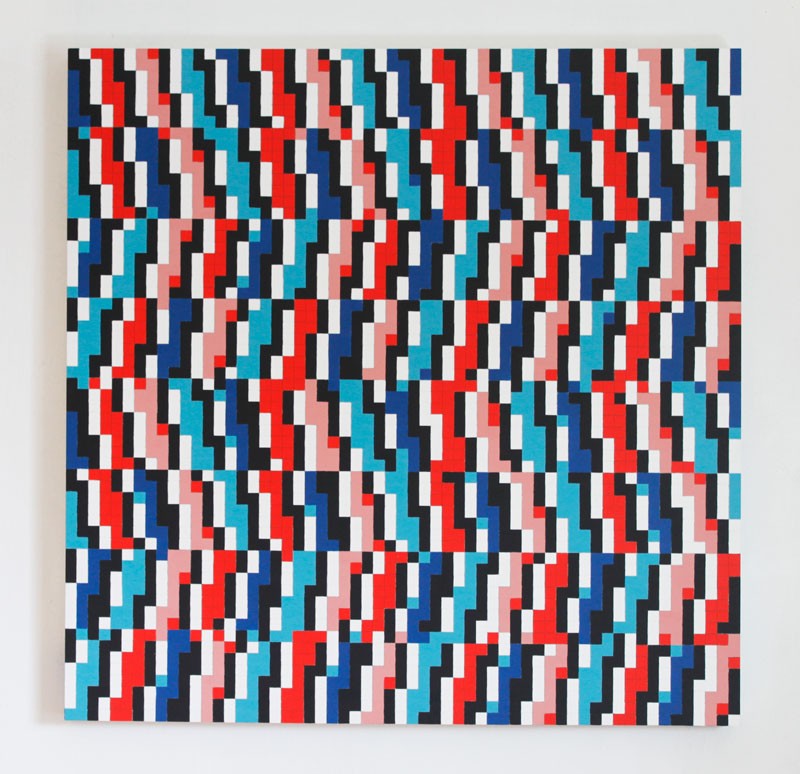

Interested in deconstructionist philosophy, architecture and design, pattern plays a large role in the Robert Otto Epstein’s conceptual approach. As he creates images that remind us of the pixelated geometries of life in low resolution, the artist begins all of his work with a hand drawn blueprint of a geometric pattern. After assigning numbers to a selection of colors, the artist cedes control of the image to chance, rolling dice to determine the palette and structure of the painting. In this context, the dice function like an algorithm, transforming inputs (random color selections) into outputs (the arrangement of color on the grid). However, by assigning the pattern’s ordering process to the random rolling of dice, Epstein subverts the role of the algorithm and echoes the unpredictable results of relinquishing contemporary ordering processes to technology.
For press or other inquiries, please contact:
Jessica Speiser at jessica@aestudiosny.com
